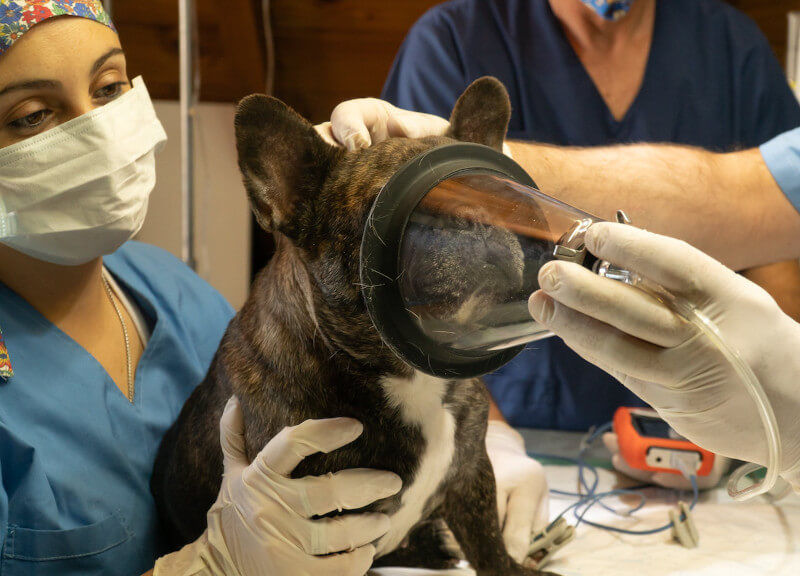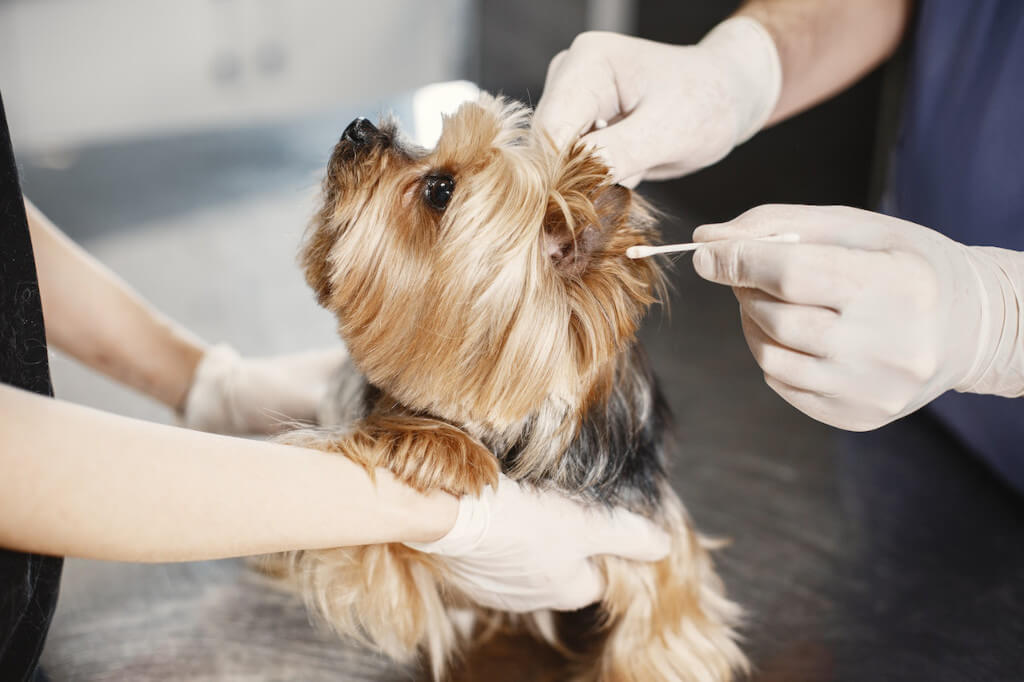We frequently wish and anticipate that we will one day be able to care for our pets in the comfort of our own homes, instead of having to shell out a few hundred Rand (or even more) for “mostly a band-aid or just a cleanup.” It is not always as simple as we believe it to be to treat a wound, particularly if the wound on your pet needs to be bandaged. Besides the fact that specialized attention needs to be provided for the majority of wounds, improperly implementing a bandage or handling a wound may cause more harm than good.
Home Treatment of Wounds in Pets and Other Animals
When treating wounds at home, you must always seek support from your vet. Many common first aid remedies, including those intended for humans, should not be used on animals. Whether an injury can be addressed at home or requires the attention of a veterinarian can be determined based on the following factors:
- The age and magnitude of the wound, as well as the cause and placement of the wound, as well as, perhaps most pertinently, whether or not the animal is ignoring the wound.
- The majority of the time, taking the wounded pet to the vet for primary treatment and guidance on how to continue caring for it at home is the method that is both the most secure and efficient way to handle the situation.
In this piece, we will discuss some of the most important aspects of wound management and care, as well as provide you with some pointers on determining when it is necessary to consult a veterinarian.
Considerations That Go Into Determining Your Next Move
The magnitude of the injury Scratches, bruises, and snags that aren’t deep enough to require stitches can be treated at home. If your pet has any cuts, open wounds, contusions, numerous wounds, and particularly any wound prompted by a fight with another animal, you should take them to the veterinarian as soon as possible. If a wound that has been caused by combat is not treated properly, the creation of a lesion is very likely to occur. This is because any wound that has been caused by combat is innately infected.
The length of time that the wound has been present is an essential aspect to consider because it dictates the subsequent treatment that should be administered. An injury might well be sewn and enabled to recover by first intention (which leads to quicker recovery, less wound dressing, and fewer inflammatory processes). The idea of the golden period is an idea that helps identify whether or not a wound could be stitched and enabled to recover by the first intention.
Within the first six hours after a wound has been sustained, the “golden period,” or the time during which an injury can be effectively cleaned and stitched without causing much further damage, typically exists. After that, things get tricky, and you have to give the repercussions of covering an infected area serious thought before you do it. Additionally, if a wound has been present for a few days, granulation tissue may have already started to produce, and second-intention recovery may have begun; in these circumstances, it is highly improbable that the wound may or ought to be stitched.
As was mentioned earlier, any wound that appears to have been caused by a fight ought to be examined by a qualified vet. In the incident that an injury is brought on by something else, the degree of hygiene associated with that thing is taken into account in addition to the other aspects of the situation. The cause of the injury poses a lower likelihood of contamination and infection proportionately to the degree to which it was contaminated.
When It Comes to Wound Healing, Some Parts of the Body Are More Resilient Than Others
Due to the abundant blood flow, wounds located over the body and neck, as well as those located higher up on the legs, often seem to recover more quickly than those located in the extremities (such as the lower legs, feet, the tips of the tail, and the ears). Wounds that are situated in parts of the body that are situated in a state of constant motion tend to heal more slowly than wounds that are in the body’s more stationary regions. Because of the movement, the tissues are deprived of the opportunity to re-integrate with one another, and these areas also become more susceptible to fluid accumulation both within and surrounding the wound. Because of the substantial amount of skin that can be more quickly separated away from the surrounding tissue, wounds on the body and neck can frequently have huge areas of space where liquid freely accumulates.
Infliction of pain upon oneself on account of an established wound (does your pet ignore their wound?) Licking wounds is a natural reaction for animals, and while this can assist to rinse the wound in the beginning, because of the large number of bacteria that animals carry in their mouths, it may also contribute to the wound becoming contaminated and infected in the long run. Additionally, persistent licking and pestering of a wound can slow down the recovery process and even cause additional damage. If you do not allow your animal to give their wounds the time they need to heal, this could lead to a persistent wound that doesn’t heal.
Home Treatment of Wounds and Injuries
If you have decided that it’s not essential to take your animal to the veterinarian for treatment of a wound, then you can treat the injury at home.
The first step in treating a wound is to clean it thoroughly, and human disinfectant remedies are an effective choice for this stage of wound care. If you’re unsure about the types of solutions that can be used, it is best to use pure water and rinse the wound with a large amount of water until you can get in touch with your veterinarian or bring your pet in to be examined by the veterinarian. After the wound has been thoroughly cleaned, you can treat it with a human scar care ointment like Germolene or Bactroban. Be aware that your pet will likely lick any ointment that is applied to a wound, so it is crucial to take precautions to avoid this happening. Because it moves the animal’s mouth away from its body, an Elizabethan collar, also known as a “cone of shame,” is frequently effective.
It’s never a great idea to try bandaging a wound at home; you should always get professional help. If bandaging isn’t done correctly, it has very severe repercussions, and it may even end up being harmful rather than helpful. If it’s done temporarily, for example, to stop bleeding while the animal is being transported to the veterinarian, then it should not be a problem. Always get in touch with your veterinarian and inquire about further treatment options once the initial course of care has been completed.
At Least Once Every Twelve Hours Should Be Spent Cleaning Most Wounds
Inquire with your veterinarian about a cleaning solution that is safe to use over the long term because the majority of human disinfectants are effective enough for preliminary wound cleaning, but they are potent and may prevent the wound from healing over the long term. When it comes to wound lotion, you can use human solutions, but there are also vet brands that have been developed particularly for use in pets that are effective and help the recovery process along. If you feel that you are unable to properly treat the wound at home, you should bring your animal to the veterinarian so that they can examine it. The following courses of action, or any combination of them, may be considered by the veterinarian depending on the findings of the wound evaluation:
Shaving The Area Around the Wound
Shaving the area all around the gash, cleaning the wound, disinfecting the wound, debriding the wound (removing dead necrotic tissue), or sewing the wound, either with or without the placing of a drain, are all possible treatments for a wound.
Washing The Wound
Shaving and washing the wound will reveal the wound, which will help eliminate any dirty or contaminated material that is in or around the wound, which will aid in the healing process and make it easier to treat the wound at home.
To Stitch or Not to Stitch?

If a wound isn’t going to be stitched, your vet will provide you with written specifications on how to care for the injured area at home, distribute medication (topical care, antibiotics, and anti-inflammatory medications as the circumstance necessitates), and have you come in for routine checks to oversee the progression of the lesion and decide the next step to take as the wound evolves. Your animal will be taken to the hospital if a wound does need to be sewn, and based on the seriousness of the wound that has to be stitched, either sedation with local anesthetic or full general anesthesia will be administered to him or her before the procedure begins.
Do they Need Wound Draining?
In the circumstance that big cavities and open areas are discovered under the skin, a drain might well be positioned near the wound to facilitate the drainage of liquid that the body processes as a reaction to the trauma. In most cases, these drains are allowed to remain in place for three days, during which time the body is given sufficient time to begin the process of healing and sealing off any open spaces. After that, these will be taken away. If a wound is sewn without the placing of a drain, there will be minimal to no wound management that needs to be done at home other than monitoring the recovery of the injured area and bringing your animal in so the stitches can be cleared. If a drain is installed, you will be required to thoroughly clean the area around it twice daily until the drain is cleared.
In Conclusion
In summary, the majority of wounds will need at least an initial examination to be performed by a vet, and you should always consult your vet for a recommendation. Make sure that your pet does not lick their injuries or cause themselves any additional pain, and give them frequent cleaning and treatment. Never apply a wound treatment to your animal that you wouldn’t use on yourself first. This includes antibiotics and bandages.

